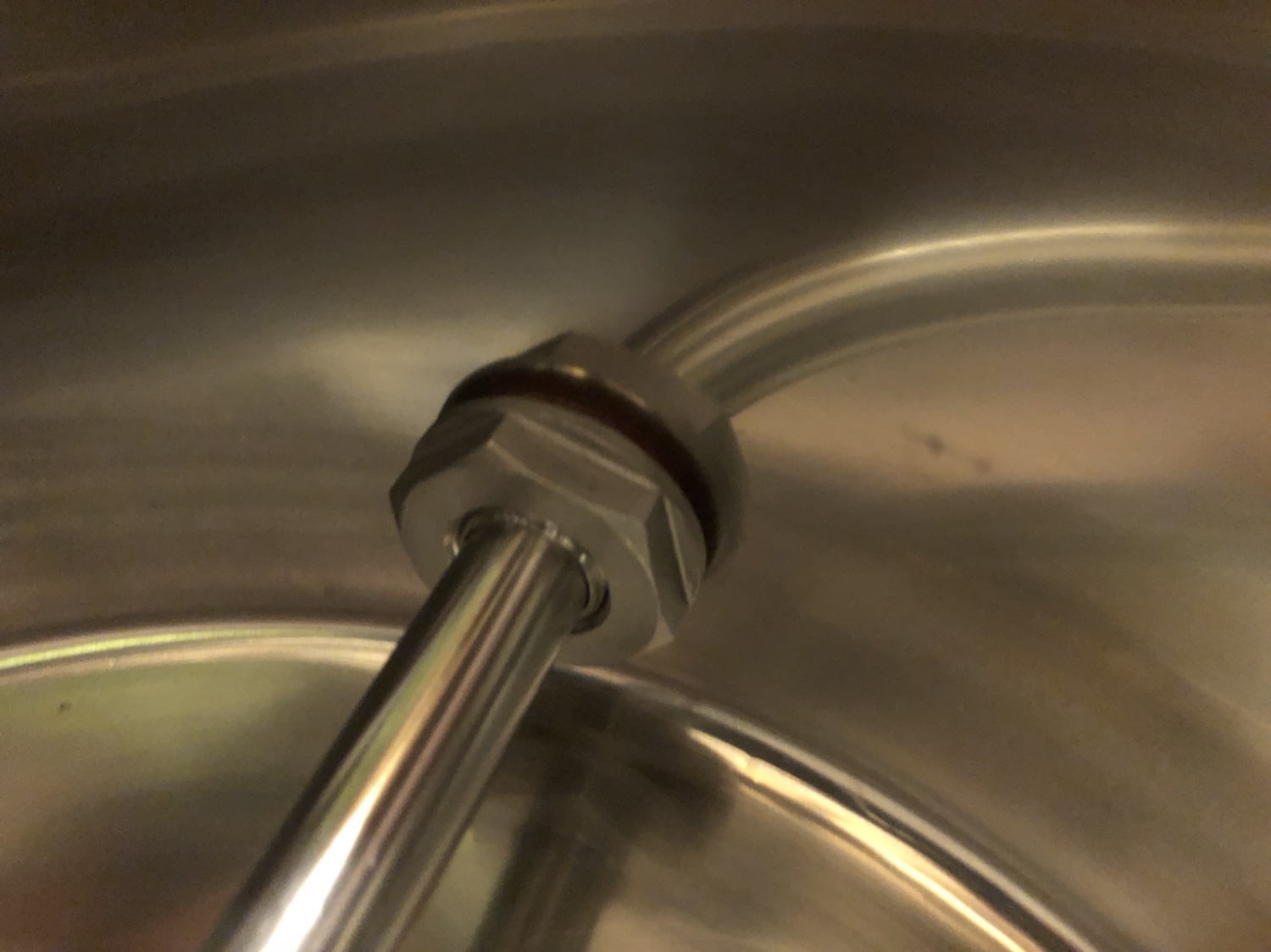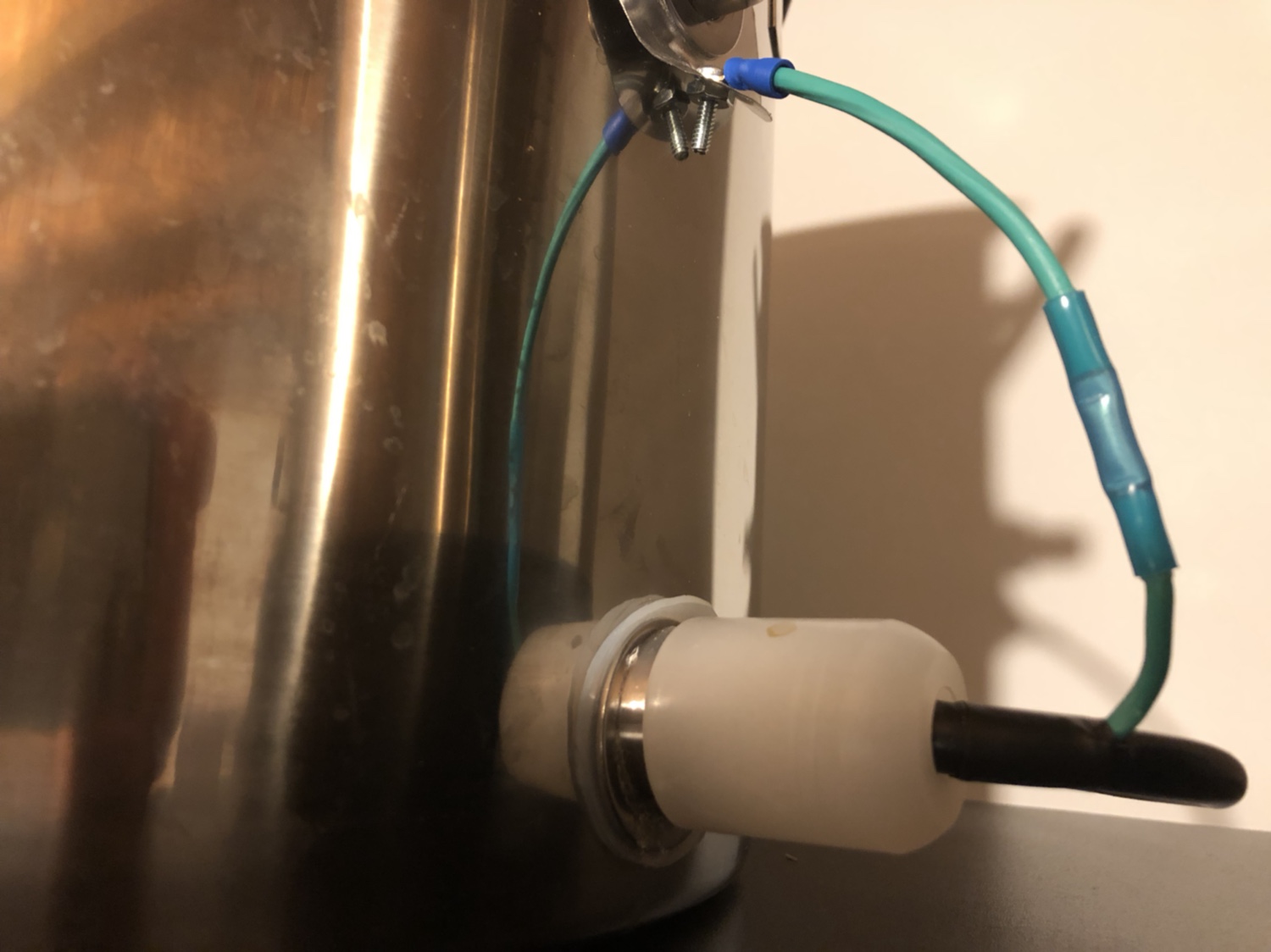WhiskeyRadar
Member
- Joined
- Jul 8, 2018
- Messages
- 13
- Reaction score
- 2
So a friend of mind had a few too many Burton Batons and decided to get into brewing one night. He ordered a kettle and a couple of 1500W heatsticks (from here: https://www.homebrewstuff.com/1500w-ss-heat-stick-with-weldless-gasket-kit.html).
A few days later he drilled the kettle for both heat sticks and assembled. No matter what he tried, he said the kettle would have a small leak. If he tightened the nut down just tight enough to get a good seal, the kettle would weep or leak when me moved it because the heatsticks would move from side to side. If he clamped the nut down to keep the sticks from moving, the washers would get mangled (he had to get some new ones from homebrewstuff.com). I think I see the reason, there's not enough contact on the outside edges of the heatsticks in relation to the outside of the kettle wall. So if you move it when the nut is tightened down properly (I assume, there's no torque specs or anything), the heat sticks wobble and can break the seal. This is obviously less than ideal. Anyway, he gave up and gave it to me. I want to save it as I think this would be a neat way to get into electric brewing (I know about needing a controller to moderate the two sticks or I can shut one off and supplement with a gas flame to get the temps dialed in based on boil volume). I uploaded a few pics (I don't have the washers on the stick on the interior pic, I just mounted them to show the gaps on the outside).
I have 4 new washers and a bunch of Teflon tape. I'm thinking:
(A) Try to see if I can find the right balance between pressure on the washer and keeping the sticks from moving.
(B) Hope the gaps on the outside are not too large for silver soldering and give that a go.
(C) Use JB Weld to fill in the gaps on the sides and perhaps build up a flat surface on the inside of the kettle wall where the heatsticks seat, effectively sealing the entire thing and using the nut and washer to keep everything nice and tight.
(D) Something I haven't thought of that you might?
Thoughts?
A few days later he drilled the kettle for both heat sticks and assembled. No matter what he tried, he said the kettle would have a small leak. If he tightened the nut down just tight enough to get a good seal, the kettle would weep or leak when me moved it because the heatsticks would move from side to side. If he clamped the nut down to keep the sticks from moving, the washers would get mangled (he had to get some new ones from homebrewstuff.com). I think I see the reason, there's not enough contact on the outside edges of the heatsticks in relation to the outside of the kettle wall. So if you move it when the nut is tightened down properly (I assume, there's no torque specs or anything), the heat sticks wobble and can break the seal. This is obviously less than ideal. Anyway, he gave up and gave it to me. I want to save it as I think this would be a neat way to get into electric brewing (I know about needing a controller to moderate the two sticks or I can shut one off and supplement with a gas flame to get the temps dialed in based on boil volume). I uploaded a few pics (I don't have the washers on the stick on the interior pic, I just mounted them to show the gaps on the outside).
I have 4 new washers and a bunch of Teflon tape. I'm thinking:
(A) Try to see if I can find the right balance between pressure on the washer and keeping the sticks from moving.
(B) Hope the gaps on the outside are not too large for silver soldering and give that a go.
(C) Use JB Weld to fill in the gaps on the sides and perhaps build up a flat surface on the inside of the kettle wall where the heatsticks seat, effectively sealing the entire thing and using the nut and washer to keep everything nice and tight.
(D) Something I haven't thought of that you might?
Thoughts?








